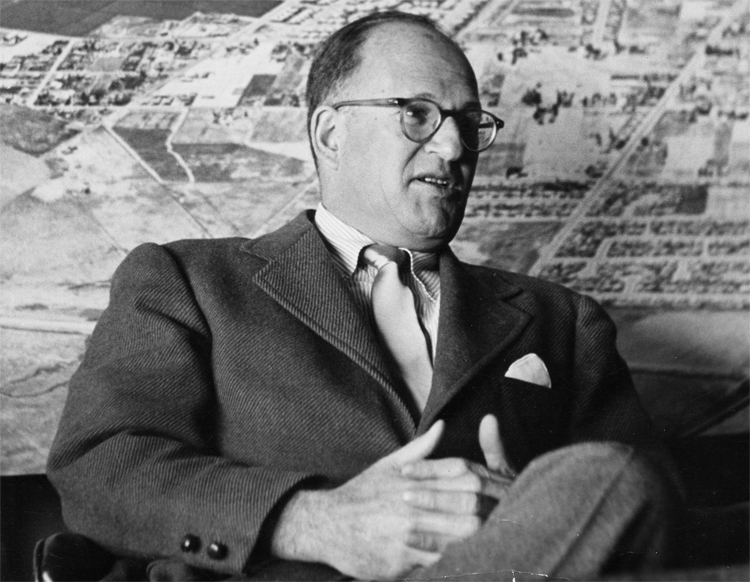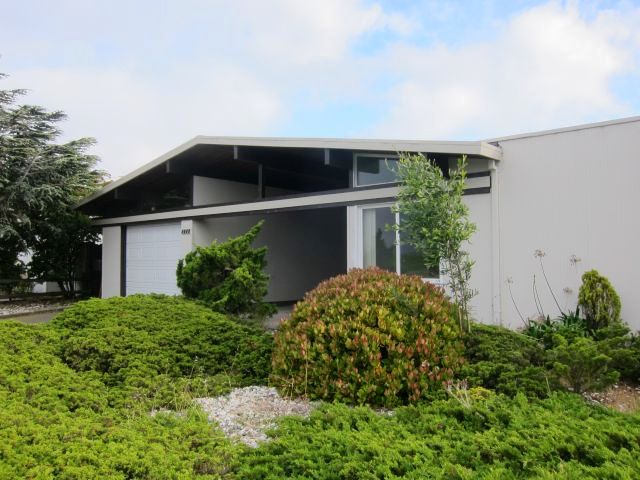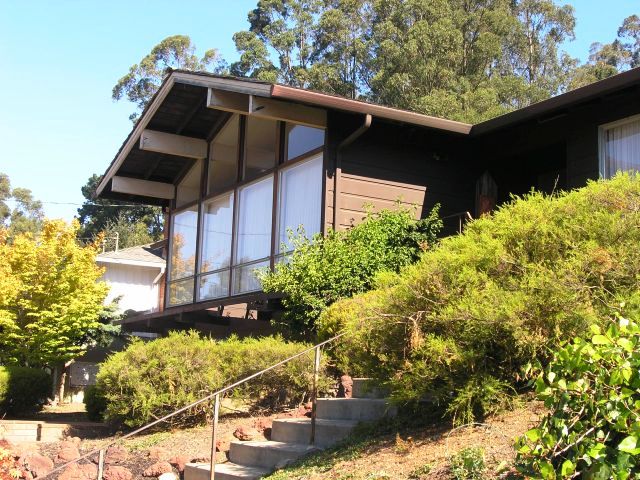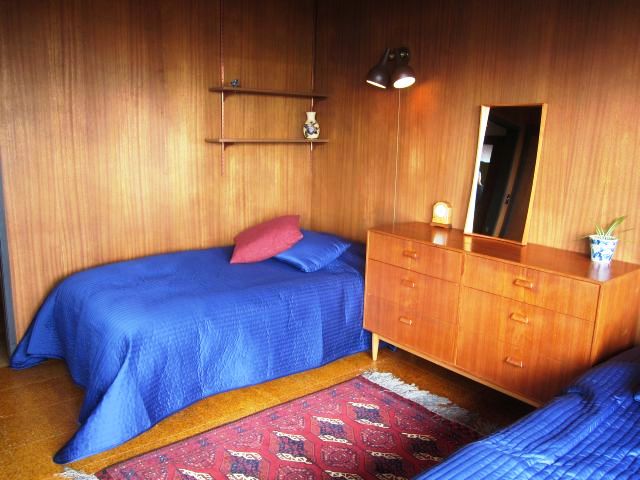
Dispelling the Top Myths about Joe Eichler
 |
|
|
Over the years much has been written about Joe Eichler and much research conducted – in no small part by writers for the Eichler Network.
Still, and surprisingly, many fans of Eichler homes, including people who have lived in them for years, still fall victim to misconceptions about Joe Eichler, the history of the homes, and their place in the history of architecture, suburban, and urban development in the 20th century.
Why is this? Well, much of it is rooted in our passion for simple stories and our hankering to believe in myths.
What are some of these myths about Eichler and Eichler homes?
Myth One: Joe Eichler himself designed Eichler homes.
OK, OK, we can hear you thinking. Everyone knows that Eichler was just the developer, the businessman with the money, the man who hired the truly creative folks behind Eichler homes – the architects.
 |
|
|
You’d be surprised, though, to discover just how many people don’t really understand this. And they misunderstand this in two different ways. Many blogsters still, lazily, report that Joe designed his homes. And we keep running into longtime Eichler owners who believe the same thing.
The other side of the error is this: While Eichler didn’t design the homes himself, he was the inspiration behind their being so modern. No other developer of mid-century modern homes – not even the Alexanders, who built homes in Los Angeles and Palm Springs – so consistently produced nothing but modern homes.
And, as Joe’s late son Ned Eichler explained, whenever others in the company suggested modifying the homes to make them more palatable to a wider range of buyers, Joe refused. “It was my father’s will and obstinacy that allowed him to construct these homes,” Ned said.
Myth Two: Joe was a crusty and tough old buzzard.
With a cigar everpresent in his mouth, a New York City accent, a domineering manner, and a hard-driving attitude towards business, Joe Eichler could be intimidating, some people remember.
But he was far from an ornery guy, recalls Frank LaHorgue, who worked for Eichler Homes from 1961 to 1965 in several roles, including as manager of finance and escrow.
Still, Frank recalls, “He also had a low, gruff voice, which gave people the sense he was gruff and mean.”
 |
|
|
Indeed, Ned said, it wasn’t just Joe Eichler’s aggressiveness and determination that made the company succeed for as long as it did. It was the man’s charm.
The contractors and Eichler’s workmen loved Joe, Ned said. “They would respond because he was so absolutely dedicated to making this work. Everybody who worked there picked this up, or they didn’t work there.”
Myth Three: Joe created an Eichler style.
Today, with Eichler homes so popular, they have come to exemplify mid-century modern to many people. So it’s easy to believe that Joe Eichler pioneered an entirely new look in homes. Many homes that share characteristics with Eichler homes from the mid-century are called 'Likelers' today, implying that they copied Joe’s work.
Some contemporary developers did.
But, in fact, Eichler’s architects – Anshen and Allen, Jones & Emmons, and Claude Oakland – were part of a generation of architects who believed that good architecture with open plans, lots of lights, and clean lines were the best way to produce livable homes for the mass of Americans.
Thus, the work of Eichler's architects shared an aesthetic with that of many of their contemporaries.
Myth Four: Eichlers were meant to be temporary stopgap homes for postwar GIs.
Well, maybe nobody really does believe this – but you hear it periodically, including in online chat rooms, where posters sometimes state that Eichlers were little better than temporary war housing and were never meant to last.
 |
|
|
In fact, war housing was an inspiration to the postwar generation of architects, who were inspired by the efficient way many neighborhoods for war workers were built – and how well many were designed, by young architects who were soon to be well known.
Eichler’s original architect, Bob Anshen, himself helped design housing for defense workers in Vallejo during World War II.
But the depth of planning that went into Eichler homes, the commitment to creating neighborhoods, and not just individual homes, and Eichler’s commitment to building homes from the start for a variety of income levels, quickly dispels this myth.
Myth Five: ‘The changes I am about to make in my Eichler home represent the way Joe would have designed it were he alive today.’
Could there be some hubris behind this argument? Or a little guilt? In any case, it is heard often enough. No, we don’t want to come across as the purist of Eichler purists but – the relation in the homes between darkness and light, the openness contrasted with a degree of closure, the colors even, the modesty – were all carefully considered by Eichler and his architects. Each of their choices was carefully considered and adds to the overall effect.
Homes can be changed by homeowners to meet changing conditions and lifestyles. But let’s not attribute these changes to the will of Joe Eichler.
- ‹ previous
- 151 of 677
- next ›



